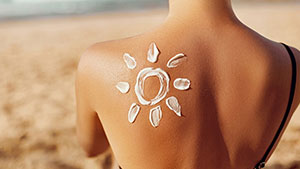15 Ways To Tighten Your Skin With Non-Surgical Treatments

If you’re looking for ways to tighten the look of your skin without surgery or Botox, you’re not alone. Many people want to keep their skin firm and youthful but prefer gentler, non-invasive treatments and skincare methods.
Fortunately, there are plenty of options to help you achieve firmer skin from the comfort of your own home or with minimal treatments at a dermatologist’s office.
Here, we’ll discuss the causes of sagging skin and explore some of the best non-surgical treatments for tightening and rejuvenating it.
What Causes Loose Skin?
As we age, our skin naturally starts to lose its firmness. This happens for several reasons, including changes in collagen and elastin levels, weight loss, and other factors.
Let’s look at some of the main reasons why skin can start to sag.
Lack of Collagen Production
Collagen is a natural protein that makes up a large part of our skin’s structure. It acts as a support system, keeping skin firm, smooth, and resilient. ” Collagen is what keeps our skin from sagging, giving us that plump, youthful look,” says dermatologist Dr. Ohara Aivaz (1).
However, as we get older, our body’s ability to produce collagen begins to decrease, usually starting in our 20s.
“Starting in our mid-20s, we slowly begin to lose collagen. For women, we can lose up to 30% of our collagen production in the first 5 years of menopause,” continues Dr. Aviaz. This reduction in collagen production leads to thinner skin that’s less able to “hold itself up,” which results in sagging and the development of wrinkles.
Beyond aging, other factors can also speed up collagen loss. These include exposure to UV rays from the sun, which can damage collagen fibers in the skin, and environmental pollutants that cause free radical damage.
Over time, lower collagen levels lead to a noticeable loss of skin elasticity, making the skin appear loose or less “lifted.”
Lack of Elastin Production
Elastin is another protein that’s crucial for youthful skin. If collagen provides structure, elastin provides flexibility. It allows our skin to stretch and snap back into place like a rubber band.
Like collagen, elastin production decreases as we age, which can lead to a loss of skin’s “bounce” or resilience. Studies show that adults lose approximately 1% of elastin each year (2). This lack of elasticity is one of the reasons why older skin can look more wrinkled or saggy, particularly in areas that are exposed to repetitive movement, like around the mouth and eyes.
Damage to elastin fibers can also come from external sources, including sun exposure and environmental pollution. When elastin is damaged, it doesn’t regenerate as effectively, which leads to a permanent loss of elasticity in those areas.
Significant Weight Loss
Significant or rapid weight loss is another major reason people experience loose skin (aka, skin laxity). When we gain weight, our skin stretches to accommodate the added volume. If weight gain is gradual, the skin may produce more cells to expand smoothly.
However, if we lose a large amount of weight quickly, our skin may not “bounce back” because it has been stretched for an extended period. This leaves behind extra, loose skin, especially in areas like the abdomen, arms, and thighs.
Age can also affect how well skin snaps back after weight loss. Younger skin is usually more resilient, but as we age, the skin loses its ability to regain its tightness as easily due to lower collagen and elastin levels. For some people, this excess skin can feel uncomfortable or impact their confidence, which is why many turn to skin-tightening treatments.
“There may be some genetic component that predisposes the amount of collagen and elastin production in the skin, which can affect an individual’s chance of developing looser skin after weight loss too,” says board-certified plastic surgeon, Samuel J. Lin, M.D (3).
Additional Factors
Aside from age and weight changes, several other factors contribute to loose skin:
-
Sun Exposure: UV rays penetrate deep into the skin, damaging collagen and elastin fibers. Long-term sun exposure without protection can lead to prematurely aged skin, which is often loose or saggy.
-
Smoking: The chemicals in cigarettes reduce blood flow to the skin, which impacts collagen and elastin production. Smoking can make skin look older faster and more prone to sagging and wrinkles.
-
Pollution: Environmental pollutants can cause oxidative stress in the skin, which leads to free radical damage. Free radicals can break down collagen and elastin, weakening the skin’s structure over time.
-
Poor Diet: A diet low in essential nutrients like vitamins C, E, and protein can affect skin health. Vitamin C, for example, is essential for collagen production, while protein provides the building blocks for skin repair and maintenance.
By understanding these causes, we can make changes in our routines to help preserve skin firmness and reduce the chances of early sagging.
Now, let’s take a look at some non-surgical options to help tighten and rejuvenate your skin.
What Are the Best Topical Treatments for Sagging Skin?
Topical treatments, like firming creams, are great for skin tightening because they’re easy to use at home and can improve the look of skin over time — no cosmetic surgery needed. Here are some of the most effective ones.
1. Retinoids
Retinoids, derived from Vitamin A, are well-known for their skin-firming and anti-aging effects. Retinoids can boost collagen production and help with cell turnover, which improves the look of loose skin.
Many creams and serums contain retinoids, and they’re a popular choice for anyone wanting firmer skin. Aesthetic doctor Dr. David Jack says, “It’s recommended to start incorporating retinoids in your mid-20s to early 30s, as this is when collagen production starts to decline” (4).
2. Vitamin C Serums
Vitamin C is not just great for overall health; it also helps your skin. A 2017 review reported that vitamin C serum can have an overall skin-tightening effect by boosting collagen production (5). Vitamin C serums are powerful antioxidants that protect the skin and boost collagen, which can reduce the appearance of wrinkles and tighten the skin over time.
3. Peptide-Based Products
Peptides are small proteins that can signal the skin to make more collagen. “Think of peptides as messengers that tell your skin to act young and stay healthy,” says dermatologist Dr. Lee (6).
Peptide-based creams and serums, like MiamiMD’s Age Defying Lift & Firm Cream, are especially popular for skin firming because they help restore elasticity and reduce sagging.
What Are the Best Non-Invasive Skin-Tightening Treatments?
If you want professional help, there are non-invasive treatments that don’t require surgery or long recovery times.
1. Radiofrequency Therapy
Radiofrequency (RF) therapy uses heat to encourage collagen production under the skin. This heat treatment can tighten skin and reduce fine lines. Many people see results in a few months, and it’s a comfortable option for firmer skin.
2. Ultrasound Skin Tightening
Ultrasound skin tightening uses sound waves to heat deeper layers of the skin, which boosts collagen production. It’s a gentle treatment that doesn’t require recovery time, and you can often see noticeable tightening after just one session.
3. Laser Treatments
Laser treatments, like laser resurfacing, are widely used to tighten skin and improve texture. The laser heats the skin’s layers, which helps with collagen and elastin production. This type of treatment works especially well on areas like the face, neck, and stomach.
What Are Minimally Invasive Skin-Tightening Procedures?
If you want a bit more than topical or non-invasive treatments, these minimally invasive cosmetic procedures may be right for you.
1. Microneedling
Microneedling involves tiny needles that create small wounds on the skin, stimulating collagen production as the skin heals. The process helps tighten skin and reduce wrinkles. Microneedling is a popular choice because it gives noticeable results with little downtime.
2. Dermal Fillers
Dermal fillers are injections that add volume to sagging areas. By filling in hollow areas and wrinkles, fillers make the skin look plumper and firmer. They don’t tighten skin directly, but they do give a more youthful appearance by lifting areas that might look “sunken” or loose.
What At-Home Solutions Can Help With Saggy Skin?
If you’d rather tackle sagging skin on your own, several at-home tools and supplements can help.
1. Microcurrent Devices
Microcurrent devices are handheld tools that use low electrical currents to tone facial muscles and stimulate collagen. These devices are safe for at-home use, and many people find that they help lift and tighten skin with regular use.
2. LED Light Therapy
LED light therapy is another great at-home treatment option. Different colors of light target various skin concerns, but red light is particularly effective for collagen production and skin firmness. There are many LED masks and tools available for home use.
3. Supplements
Supplements, like Total Beauty Matrix by MiamiMD, can provide nutrients that help support skin health. Collagen, Vitamin C, and antioxidants are key ingredients that may benefit your skin from the inside out.
What Lifestyle Changes Can Promote Skin Firmness?
In addition to treatments, there are also lifestyle changes you can make to keep skin firm and healthy.
1. Strength Training
Strength training builds muscle, which can fill in loose skin and help tighten areas. Exercises like weightlifting, resistance band training, and bodyweight exercises are all effective ways to keep skin looking firm, especially after weight loss.
2. Hydration
Drinking enough water is essential for healthy skin. When you’re well-hydrated, your skin stays plump and elastic, which can prevent sagging. Try to drink eight glasses of water a day for best results.
3. Sun Protection
UV rays can break down collagen and elastin in the skin, leading to sagging. Wearing sunscreen daily helps protect against these harmful effects, keeping your skin firmer over time.
4. Nutrition
Eating a healthy diet filled with antioxidants, protein, and vitamins can keep your skin strong. Foods like berries, leafy greens, fish, and nuts are especially beneficial for collagen and elastin production.
The Bottom Line
Non-surgical treatments for skin tightening can be effective and accessible, with many options available to suit different needs. Whether you choose topical treatments, at-home devices, or professional therapies, there are ways to achieve firmer skin without surgery.
Try combining these methods and lifestyle changes to keep your skin looking its best!





